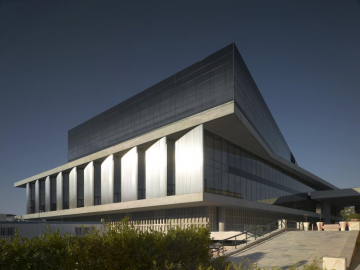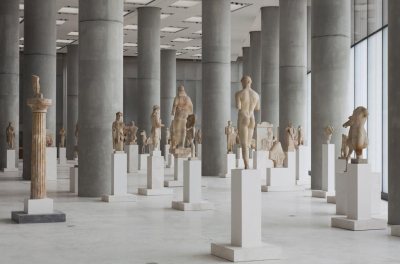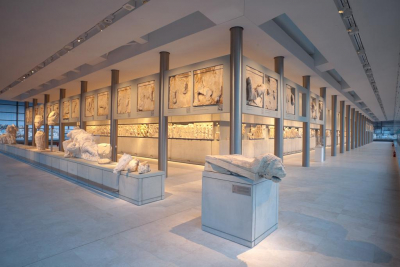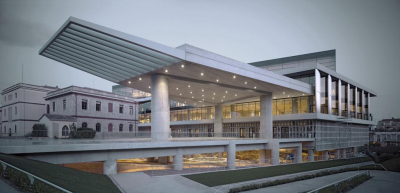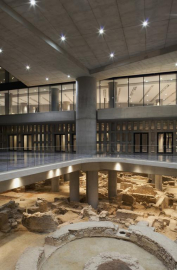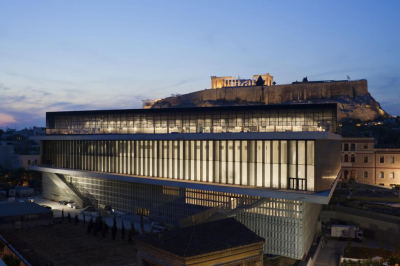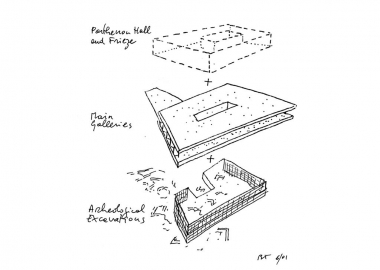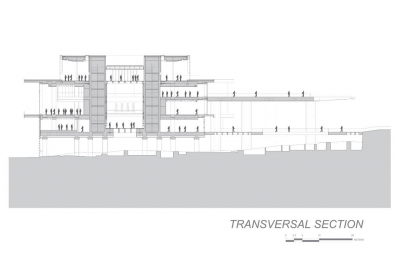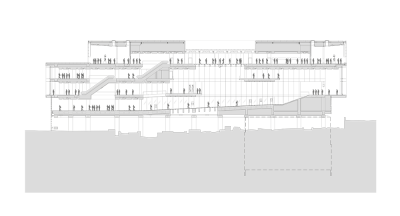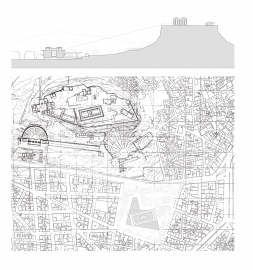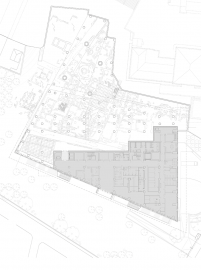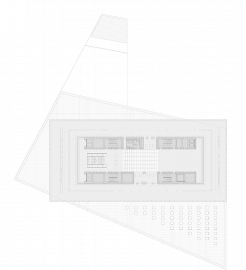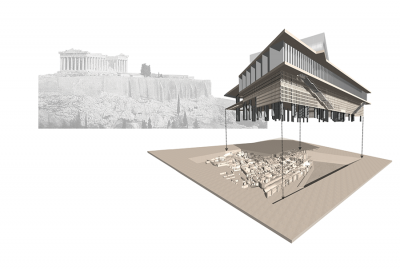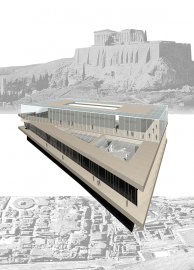Acropolis Museum
Located at the foot of the Acropolis, the site for the museum presented sensitive archeological excavations; the contemporary city and its street grid; and the Parthenon itself. As a result of these existing conditions as well as the specific needs of each part of the programme, the building was articulated into a base, middle and top. The base of the museum floats on pilotis over the existing excavations, protecting the site with a network of columns placed in careful negotiation with experts.
This level contains the entrance lobby as well as temporary exhibition spaces, an auditorium, and support facilities. A glass ramp overlooking the excavations leads to the galleries in the middle in the form of a double-height room supported by tall columns aligned to the trapezoidal city block. The top, which is made up of the rectangular Parthenon Gallery arranged around an interior court, rotates to orient the marbles of the Frieze exactly as they were at the Parthenon centuries ago. The design is inherently sustainable as the hot climate of Athens required innovation from the beginning, and the materials are resilient and mostly local; concrete and marble were sourced from the region.
Glass is a key part of the design, bringing natural light into the space and providing transparency. Sun protection is provided by cantilevering floor slabs all around the building, especially on the south side, which prevents most direct sunlight from reaching the facades. The lower level facades are made of a precast concrete screen that filters the light inside while providing a strong thermal mass. The facade for the middle part is entirely glazed on the south and north sides and made of large opaque fins on the east and west sides to offer protection from the low setting and rising sun. On the south side, fritted exterior glass fins stiffen the facade and also act as a brise-soleil. A double ventilated facade, high performance film and fritted double glazed panes reduce heat gain while the air gap between the two envelopes is ventilated by convection, which cools the facade without dedicated air conditioning and recycles the cooled air of the gallery.

